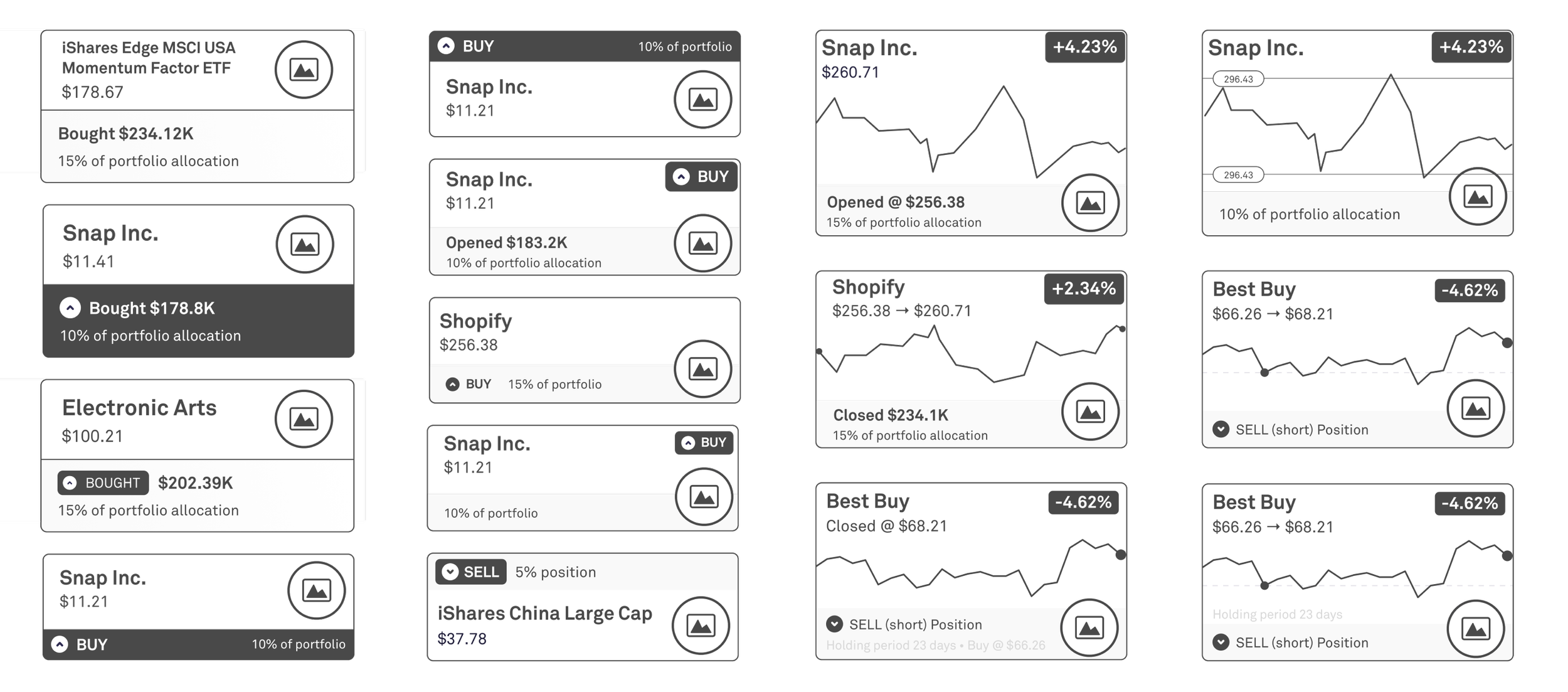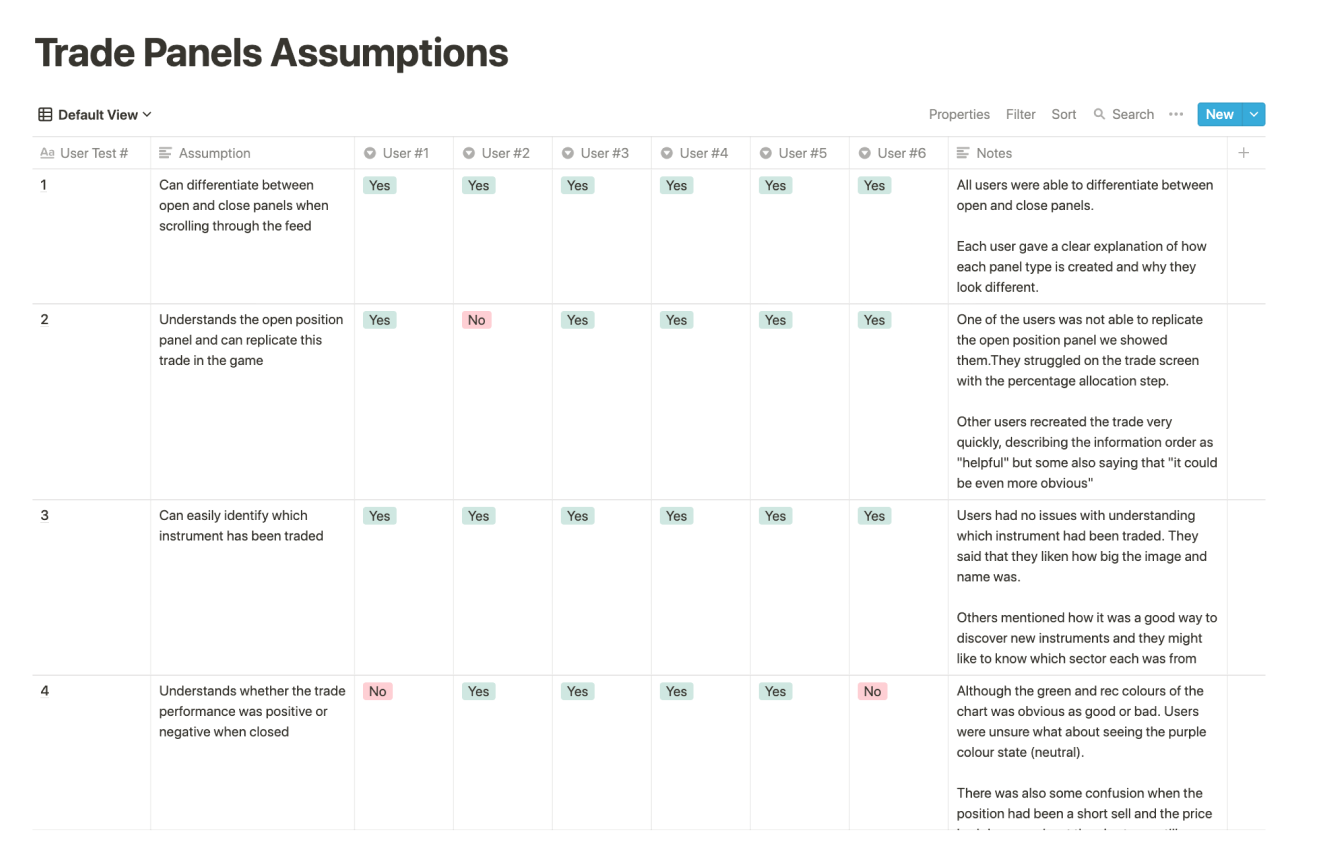Game performance in Fantasy Finance
Project background
Once a player has created their fantasy portfolio and started making trades, soon comes the time to close a position. This is the moment a player gets to review their trade performance, which can then be seen by others in the game too.
March 2019 - September 2019
My role
This was one of my more ‘hands on’ projects during my 3 years at Invstr. I was responsible for all aspects of the UX design process, from discovery to delivery.
This was designed in London with the product and business colleagues. I then travelled to Istanbul and worked with side by side with our tech team to implement, iterate and deliver the final outcome
Responsible for
UX discovery
Focus groups and community feedback
UX design critique, benchmarking and analysis
Problem definition
Usability testing
Component design
The Challenge
Closing a trade is a key moment in a players journey as its only then do they know how good or bad they’ve performed. This is the time for players to understand their actions and how well they’re doing so far in the game.
However, the experience of closing a trade was currently a huge point of confusion for players. Our community regularly complained that the results they were shown were “data heavy“, “boring”, “disconnected from the game” and “hard to understand”. With this redesign, our objective was to vastly improve a player’s understanding of each trade they make; creating a simpler and more gamified experience that will translate to the real world of investing.
Discovery
For this project, we took a lean and agile approach to research. Previous customer feedback on the issue was the main reason this project had been prioritised, and we felt it was important to leverage and build on existing insights from our community.
With the help of our community manager, we recruited 12 players to participate in a contextual inquiry - a research method for deep observation of someones actions. Participants were given a set of tasks to complete; such as closing a trade (our main hypothesis for the biggest problem to solve).
Each of the responses and observations from our participants was mapped in various ways. From this insight, we created many problem statements, which we then turned into statements of opportunity in the format of “How might we”. This is the one that resonated the most with the team.
“How Might We… educate and excite players about their trade performance, regardless if they win or lose”
Workshops & ideation
After a few internal design workshops, and with close collaboration with the development team - we started to ideate sketch out some potential designs. One of the best ideas from our workshops was to show a simplified chart, showing where a trade has been opened, and then later closed.
Showing a chart was a big challenge for us as most trades by our new players are only held for a few minutes (mostly due to excitement). This was challenging as it dramatically reduced the amount of data points we could show. This created a new opportunity for us… HMW encourage players to hold on to positions for longer?
Prototyping & testing
We observed users playing the game and sharing the new Hi-Fi designs. Before testing, we outlined some assumptions that we had made whilst designing. Since there was no definitive action to give each one a pass or fail (such as signing up), we either asked questions during the observation, or asked users to replicate trades they had been previously shown.
After testing our assumptions, we found that most users understood the direction. We gathered feedback to make some final tweaks and start implementing the design.
Component design
The final solution combined structured data with a visually striking design. We limited the amount of data to help our players really focus on what mattered. Using components and design language from the core game experience helped them learn.
Surprisingly, the closed position shares with a negative performance (when someone loses money) received the most social interaction and engagement from our community.
Project summary
The feedback from our community was overall very positive. We saw increases in our retention data and also an increase across all types of social engagement (likes, comments & shares).
• Players were motivated to learn more
• Negative performance were the most engaged shares
• Players discovered and looked at more stocks than before










